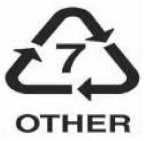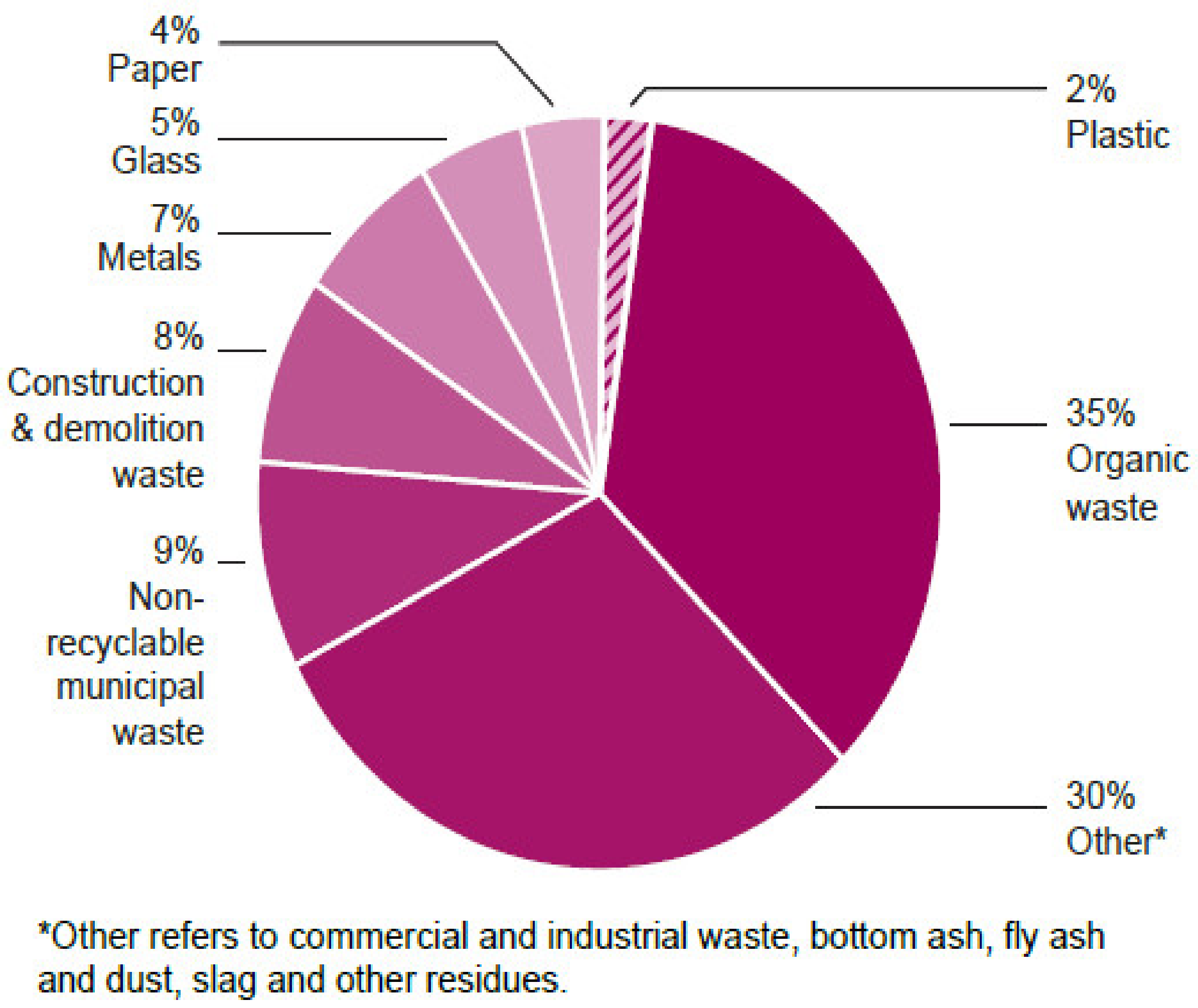Twenty-first century human behaviour continues to escalate activities that result in environmental damage. This calls for environmentally friendly solutions, such as waste recycling and handling, to deal with the increased amount of waste, especially plastics. The plastic materials manufacturing sector is booming, particularly packaging; while only a fraction of its waste is recycled, another fraction is destroyed, and the larger part continues to pollute the environment. In addition to other waste disposal activities, destroying plastic or incineration (which could be for energy recovery) is usually subjected to strict legal requirements because of its effect on the environment. However plastic is destroyed or disposed of, it poses a serious challenge in both the short term and the long term to humans and their natural environment if the process is not efficiently managed.
- environmental impact
- waste
- plastic
- recycling
- dumping
- incineration
1. Introduction
| Symbols | Types of Plastics | Common Uses | Properties | Negative Health Effect | Recycled Into | |
|---|---|---|---|---|---|---|
 |
Polyethylene terephthalates | Water bottles, soft drinks, salad dressing and domes, containers and biscuit trays | Tough, clear, solvent resistant, a barrier to moisture and gas softens at 80 °C | Causes carcinogens, vomiting, diarrhoea [2] | Causes carcinogens, vomiting, diarrhoea [19] | Sleeping bag and pillow filling, carpeting, clothing, soft drink bottles, building insulation |
 |
High-density polyethylene (HDPE) | Freezer and shopping bags, buckets, shampoo, ice cream and milk containers, juice bottles, chemical and detergent bottles, rigid agricultural pipe, crates | Hard to semi-flexible, resistant to chemicals and moisture, waxy surface, opaque, softens at 75 °C, easily coloured, processed and formed | Stomach ulcers [3] | Stomach ulcers [20] | Recycling bins, compost bins, |
 |
i. Polyvinyl chloride (PVC) ii. Plasticized polyvinyl chloride PVC-P |
Cosmetic containers, plumbing pipes and fittings, electrical conduct, blister packs, wall cladding, roof sheeting, bottles, garden hose, shoe soles, cable sheathing, blood bags and tubing | i. Strong, tough, softens at 80 °C, can be solvent welded and clear. ii. Flexible, clear, elastic, can be solvent welded |
Interferes with hormonal development [4] | Interferes with hormonal development [21] | Compost bins |
 |
Low-density polyethylene (LDPE) | Refuse bags, irrigation tubings, mulch film, cling wrap, garbage bags, squeeze bottles | Soft flexible, waxy surface, translucent, softens at 70 °C, scratches easily | Not recyclable [5] | Not recyclable [22] | Bin liners, pallet sheets |
 |
Polypropylene (PP) | Lunch boxes, microwave dishes, garden furniture, kettles, bottles and ice cream tubs, potato chip bags, straws and packaging tape | Hard and translucent, softens at 140 °C, withstands solvents, versatile | No known effects [6] | No known effects [23] | Pegs, bins, pipes, pallet sheets |
 |
i. Polysterene (PS) ii. Expanded polysterene (PS) |
CD cases, plastic cutlery, imitation glassware, low-cost brittle toys, video cases/foamed polystyrene cups, protective packaging, building and food insulation | i. Semi-tough glassy rigid clear or opaque, material, it softens at 95 °C, affected by fat, acids and solvents, but resistant to salt solutions and alkalis, low water absorption, when not pigmented it is clear, odour- and taste-free. ii. Special types PS are available for special applications |
Takes a thousand years to degrade [7] | Takes a thousand years to degrade [24] | Recycle bins |
 |
Polycarbonate and others | Automotive and appliance components, computers, electronics, cooler bottles, packaging |
Includes all resins and multi-materials (e.g., laminates) properties dependent on plastic or combination of plastics | Obesity, cancer, endocrine problems in foetuses and children [8] | Obesity, cancer, endocrine problems in foetuses and children [25] | Recycle bins |

